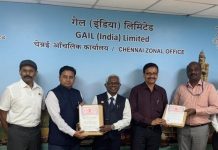In a major achievement, Indian scientists have developed Nafithromycin, the country’s first homegrown macrolide antibiotic.
The Ministry of Chemicals and Fertilizers officially announced the development on December 6, 2024.
The milestone marks a significant step in addressing the growing global threat of antimicrobial resistance (AMR).
Tackling Antimicrobial Resistance
Nafithromycin has been created as part of India’s efforts to combat antimicrobial resistance, which occurs when microorganisms evolve to resist the effects of medicines, rendering treatments ineffective.
AMR poses a serious risk to global health, food security, and economic stability. Nafithromycin is designed to tackle this challenge head-on, especially by targeting Community-Acquired Bacterial Pneumonia (CABP) caused by drug-resistant bacteria.
The Journey to Development
After thirty years of extensive research, India’s pharmaceutical sector has achieved a remarkable feat.
Developed by Wockhardt with support from the Biotechnology Industry Research Assistance Council (BIRAC), Nafithromycin was launched on November 20, 2024. The drug is marketed under the brand name miqnaNafithromycin, or miqnaf.
A Game-Changer in Treatment
Nafithromycin offers several advantages over existing treatments. It is ten times more effective than other macrolide antibiotics, such as azithromycin, and provides a three-day treatment regimen.
This significantly shortens recovery time and improves patient outcomes, making it a game-changer in the treatment of drug-resistant bacterial infections.
Targeting Vulnerable Populations
The drug is particularly beneficial for vulnerable populations, including children, the elderly, and individuals with weakened immune systems. By addressing both typical and atypical drug-resistant bacteria, Nafithromycin has the potential to save countless lives by preventing complications from CABP.
Superior Safety and Minimal Side Effects
Nafithromycin also boasts superior safety features, with minimal side effects and no significant drug interactions.
As reported by msn.com, its development not only underscores India’s growing pharmaceutical capabilities but also represents a significant contribution to global efforts in combating antimicrobial resistance.
































